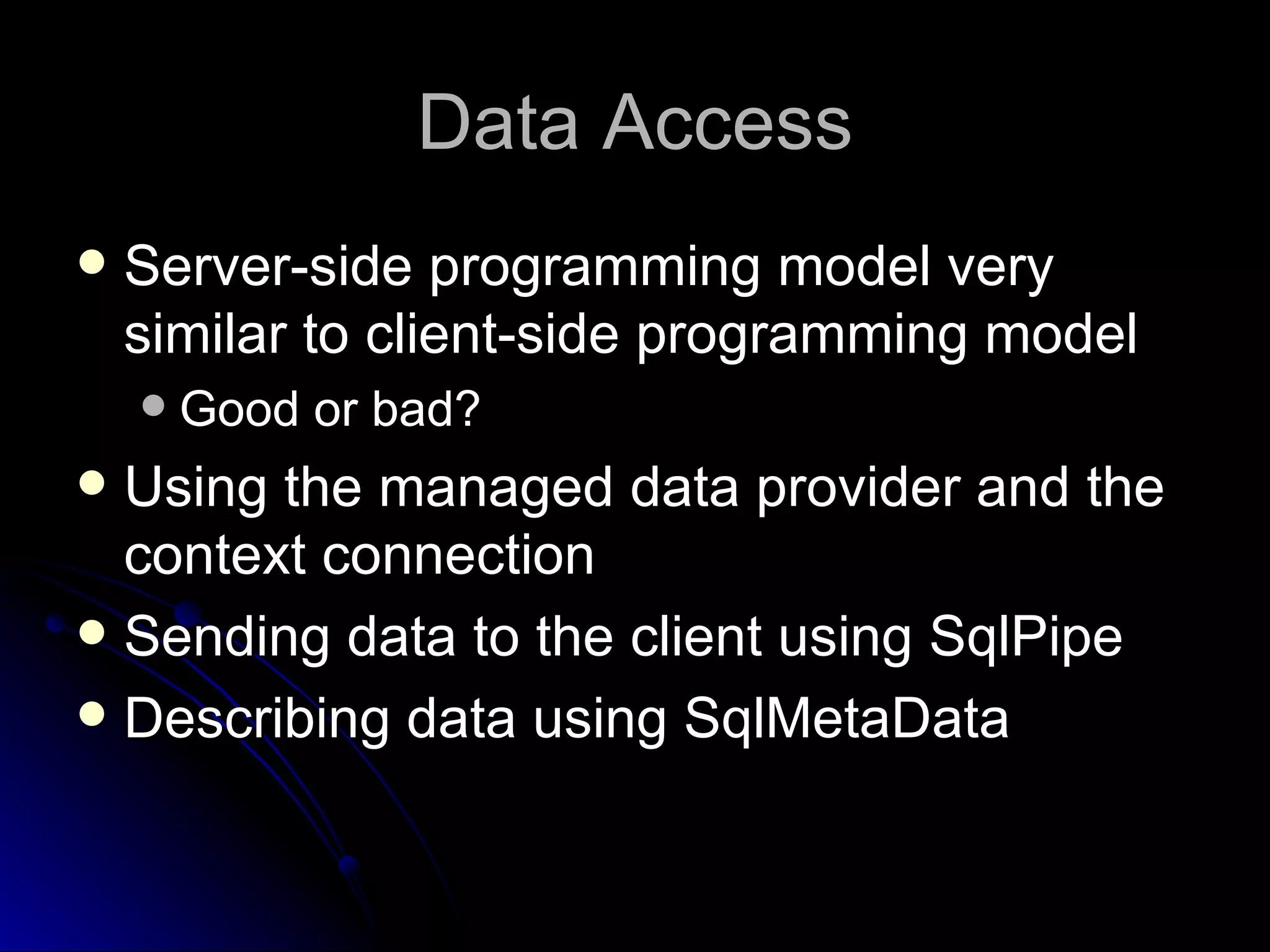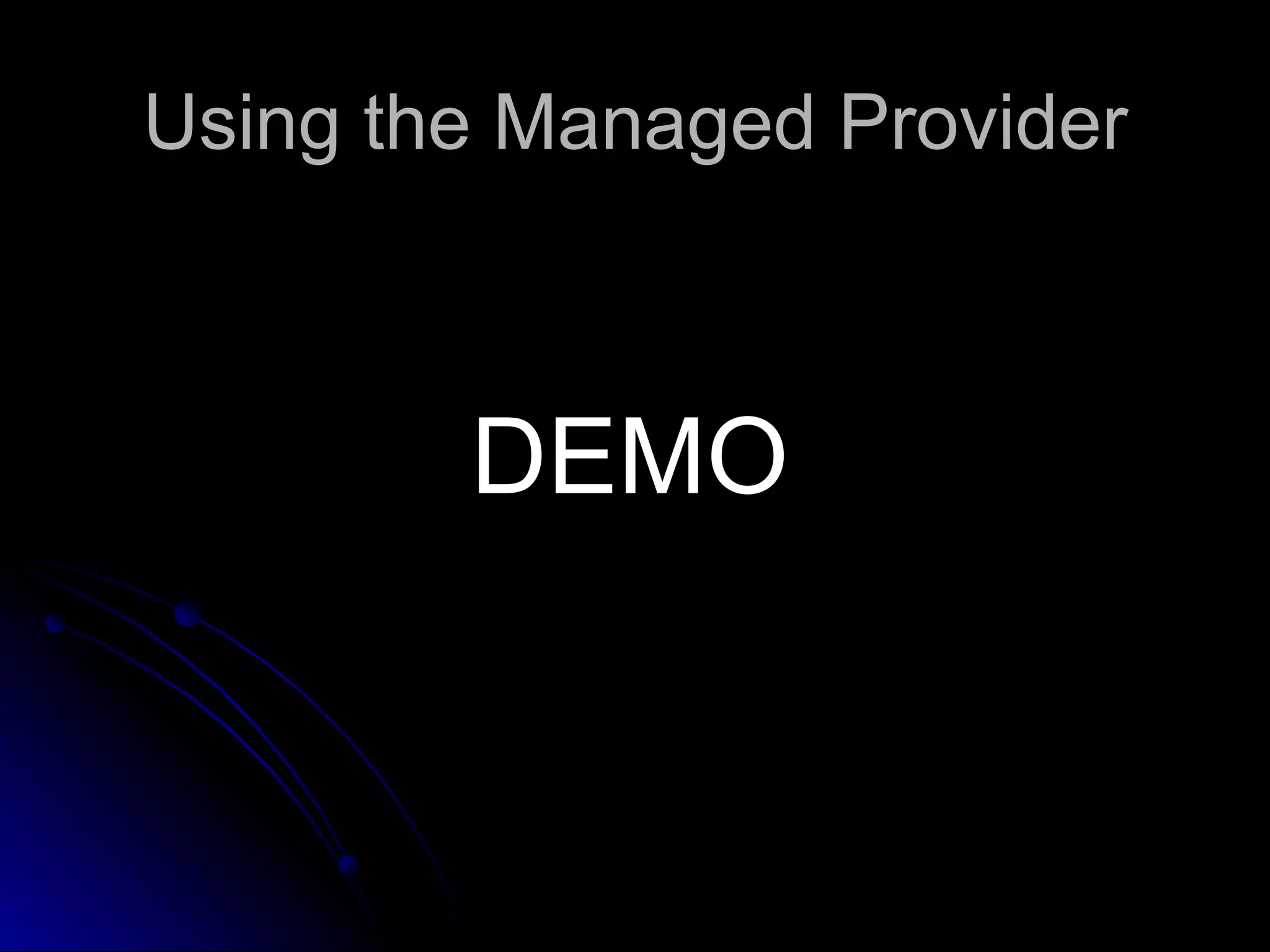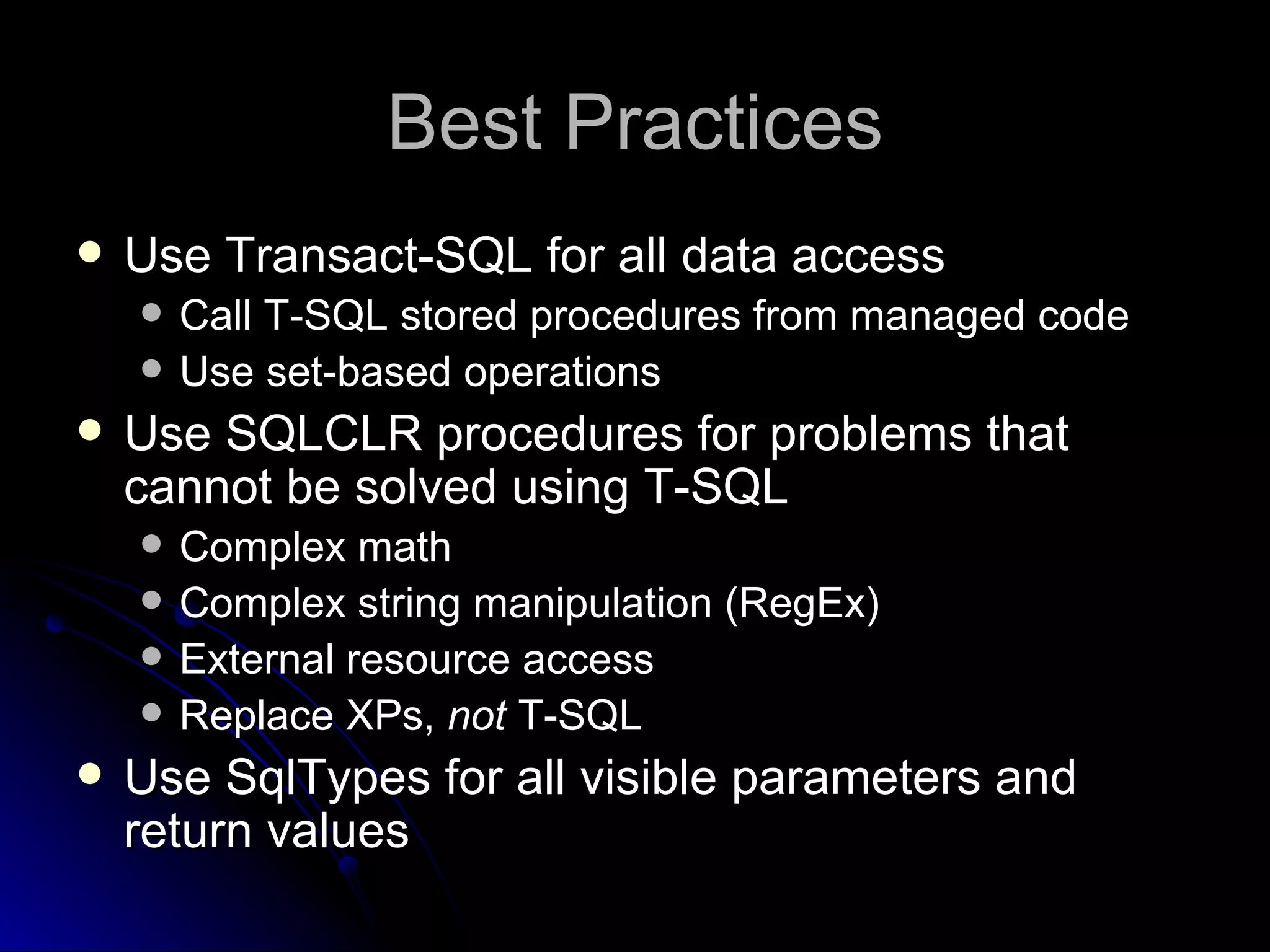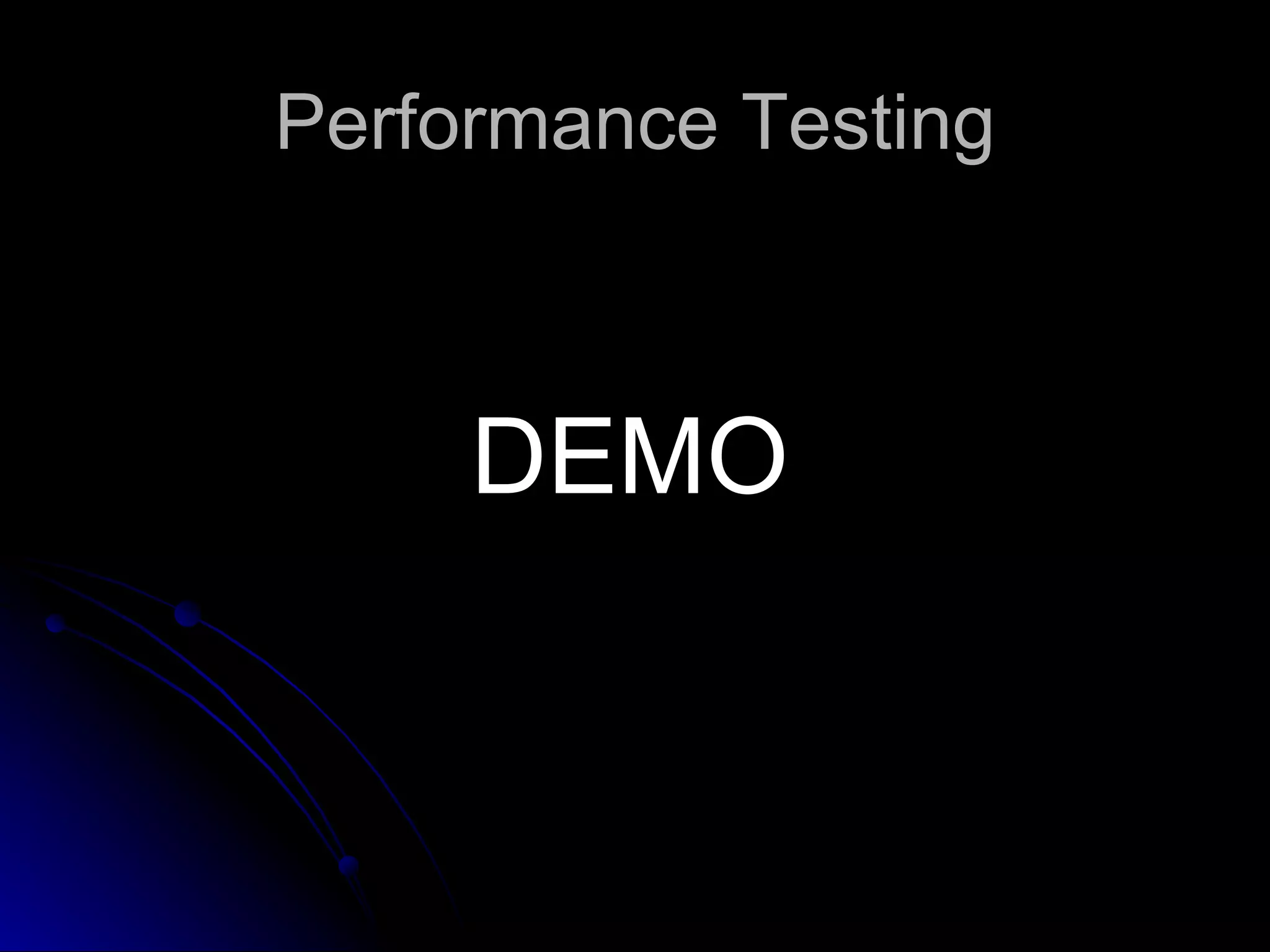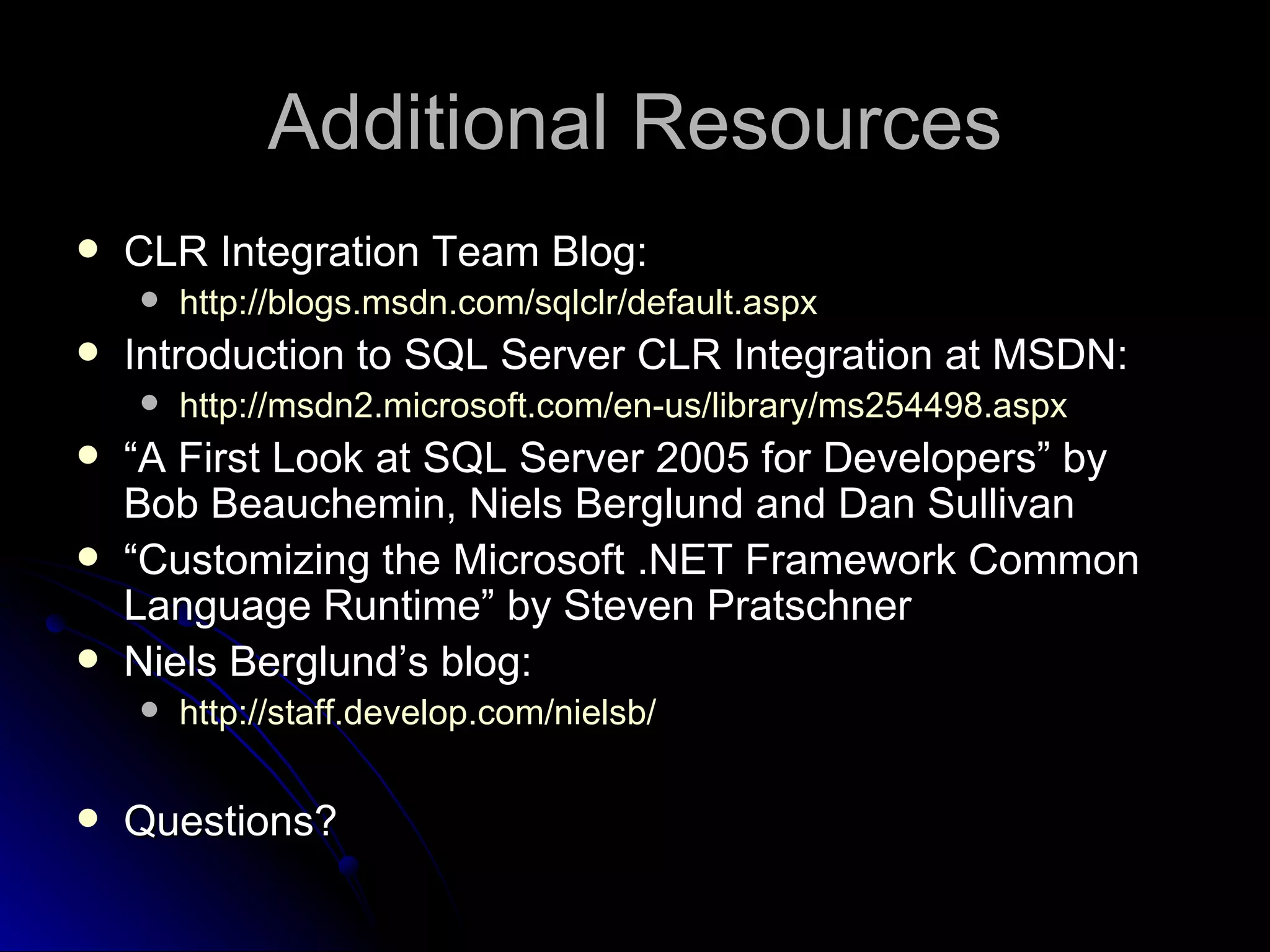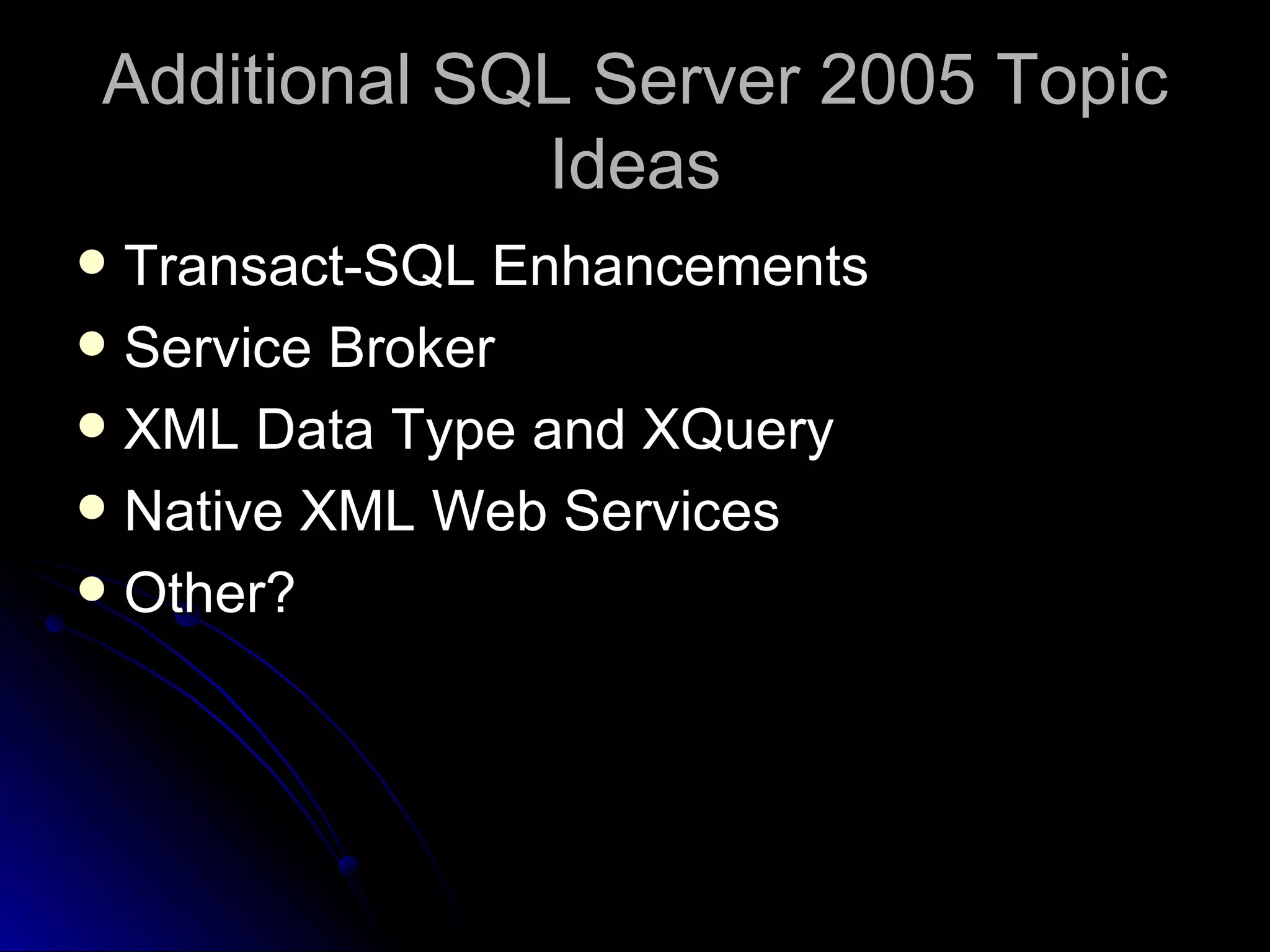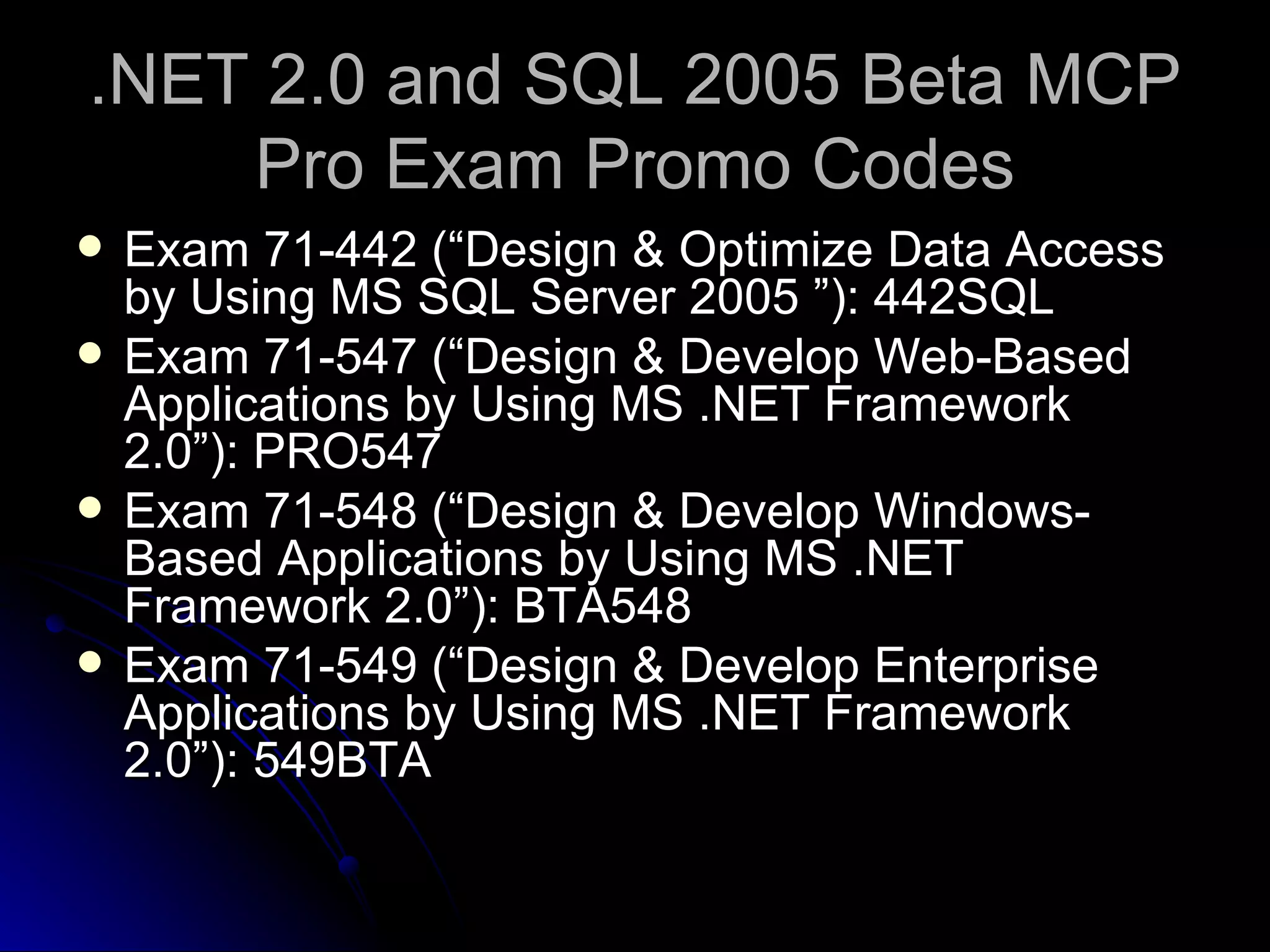This document provides an overview of programmability options in SQL Server 2005, including Transact-SQL, extended stored procedures, OLE automation, and SQLCLR. It discusses SQLCLR architecture and security model and how to create managed objects like stored procedures, functions, triggers, user-defined types, and aggregates. It also covers best practices like using T-SQL for data access and calling stored procedures from managed code.
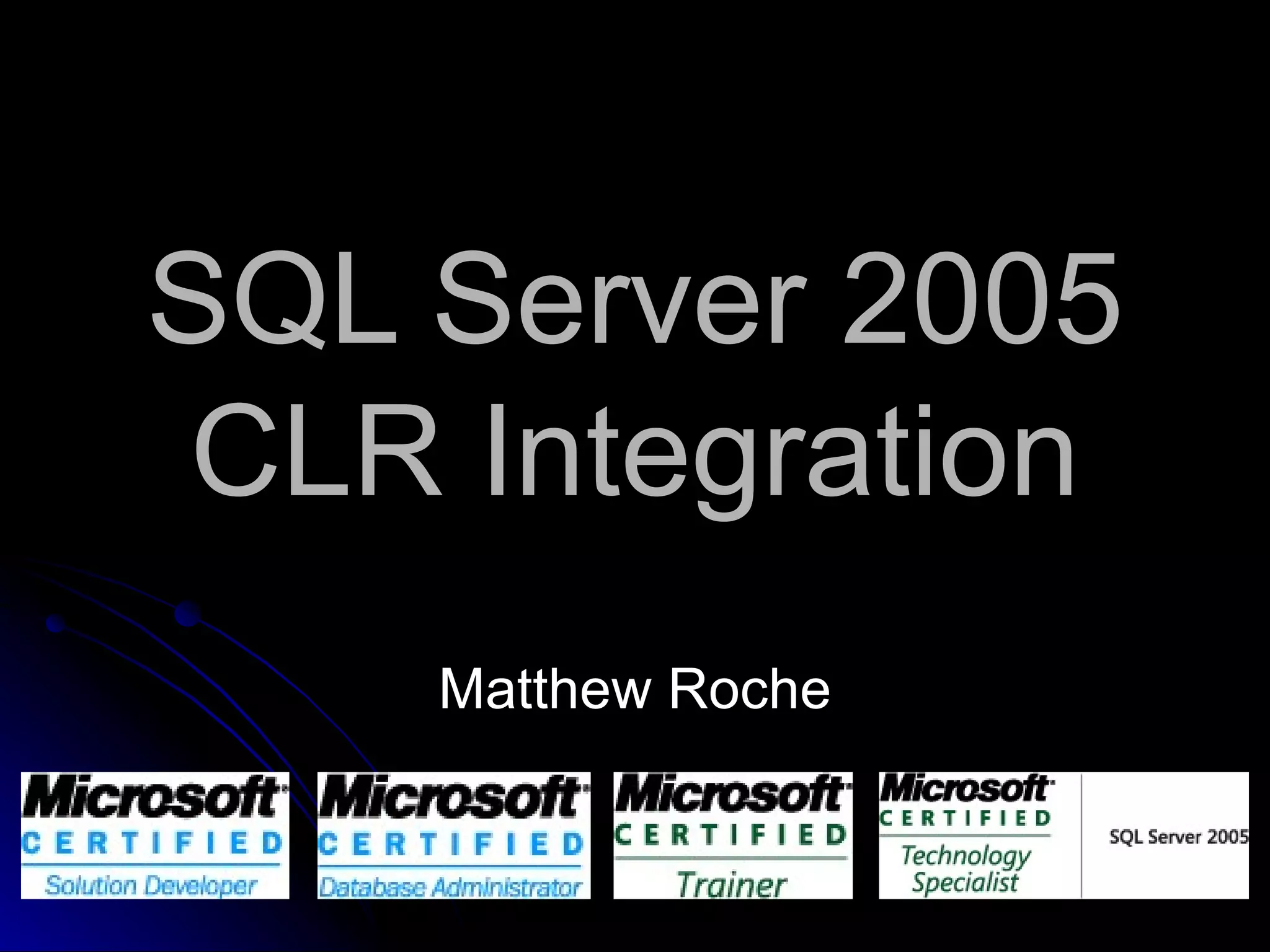
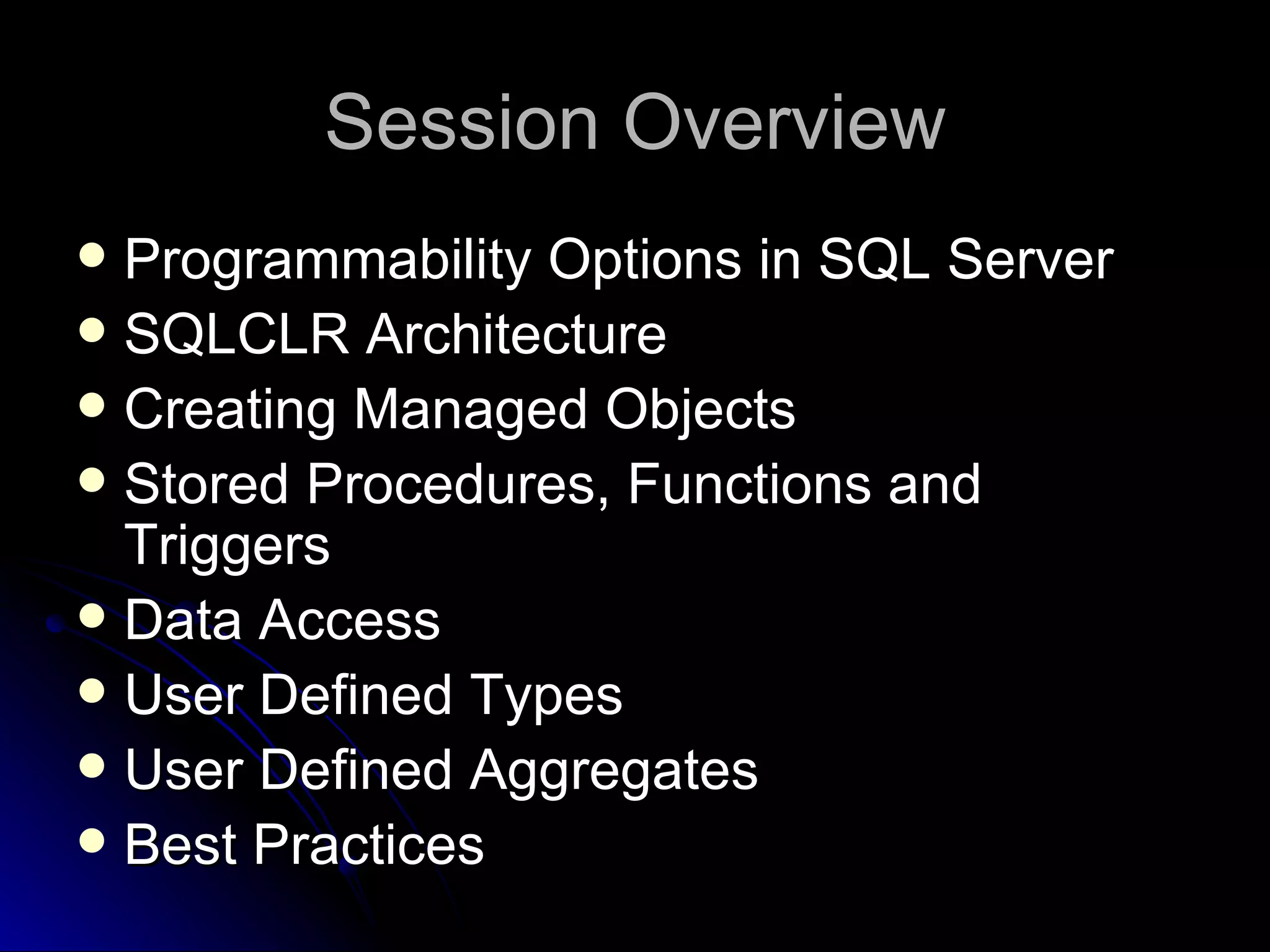
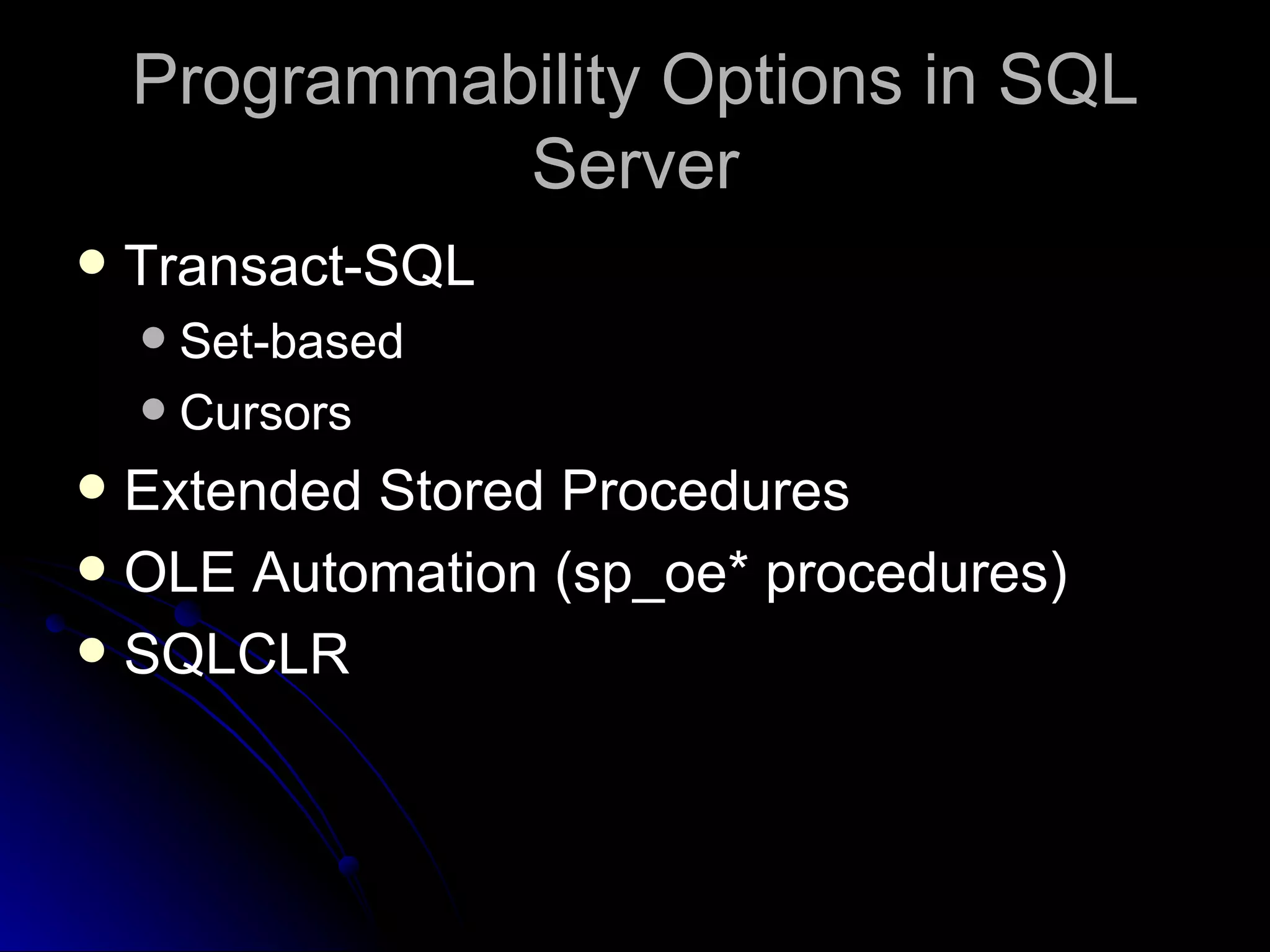
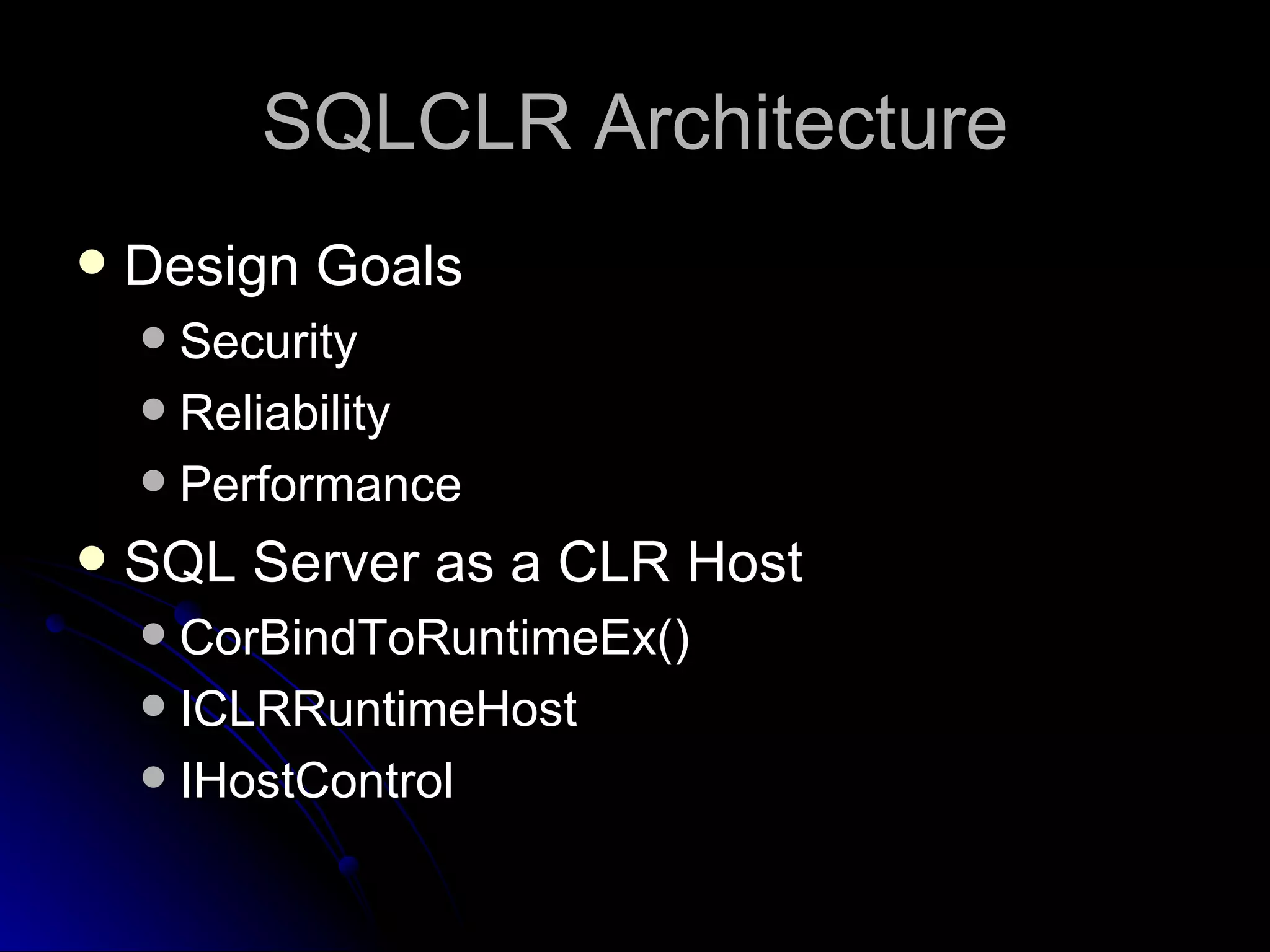
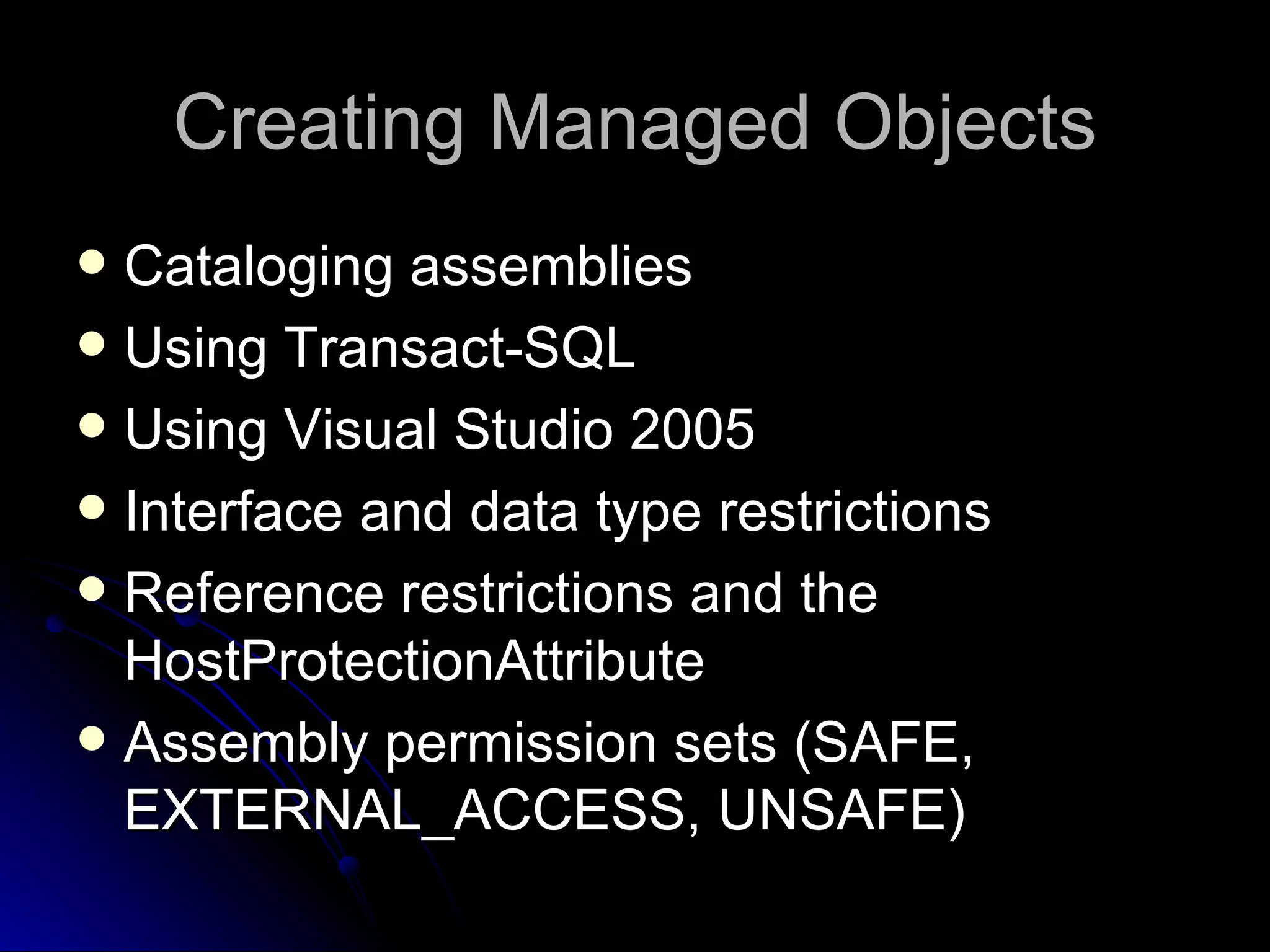
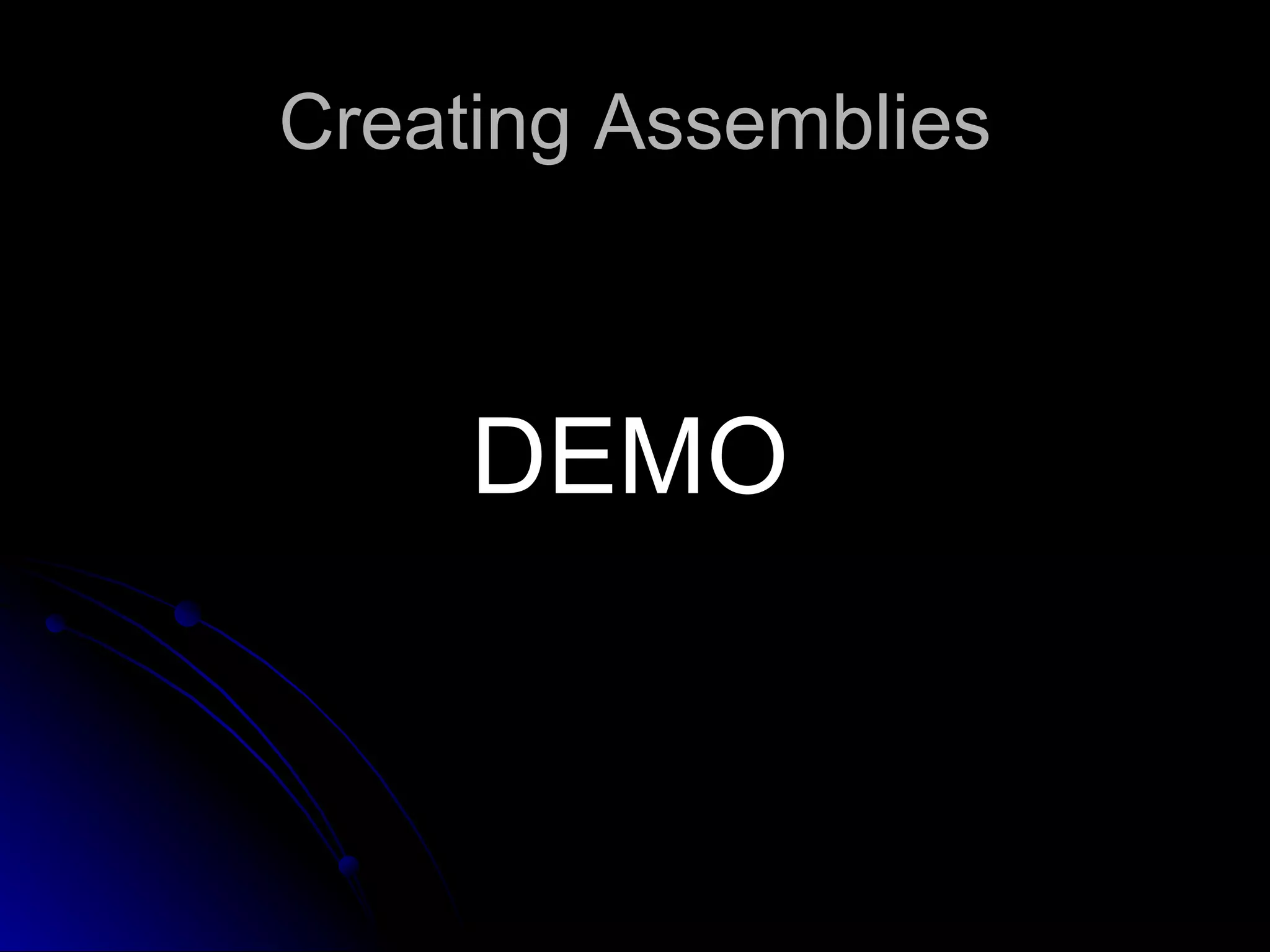
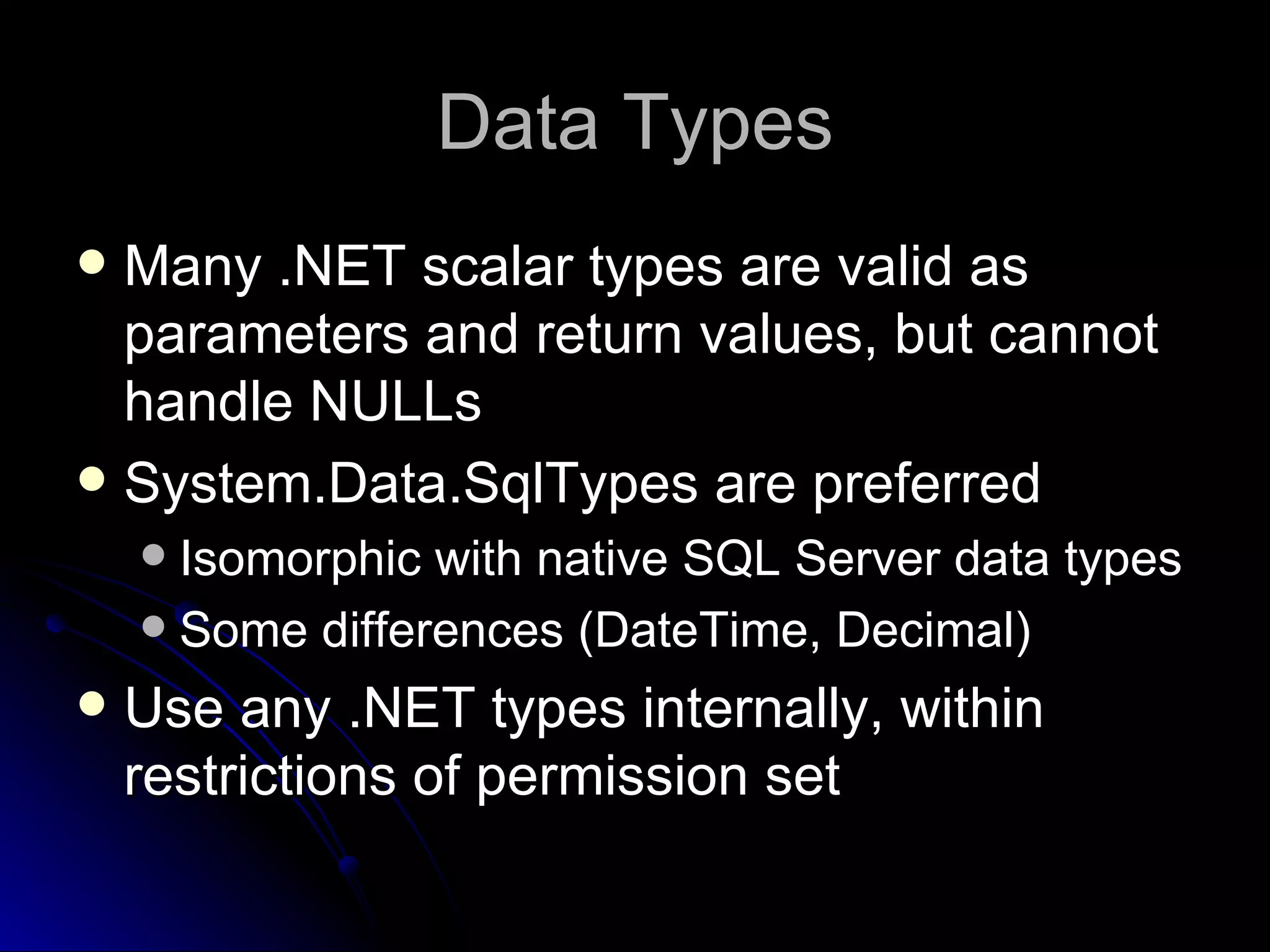
![Stored Procedures Static public int or void method Microsoft.SqlServer.Server.SqlProcedure attribute [SqlProcedure] public static void StoredProcedure() { // Put your code here }](https://image.slidesharecdn.com/sql-server-2005-clr-integration1119/75/SQL-Server-2005-CLR-Integration-8-2048.jpg)
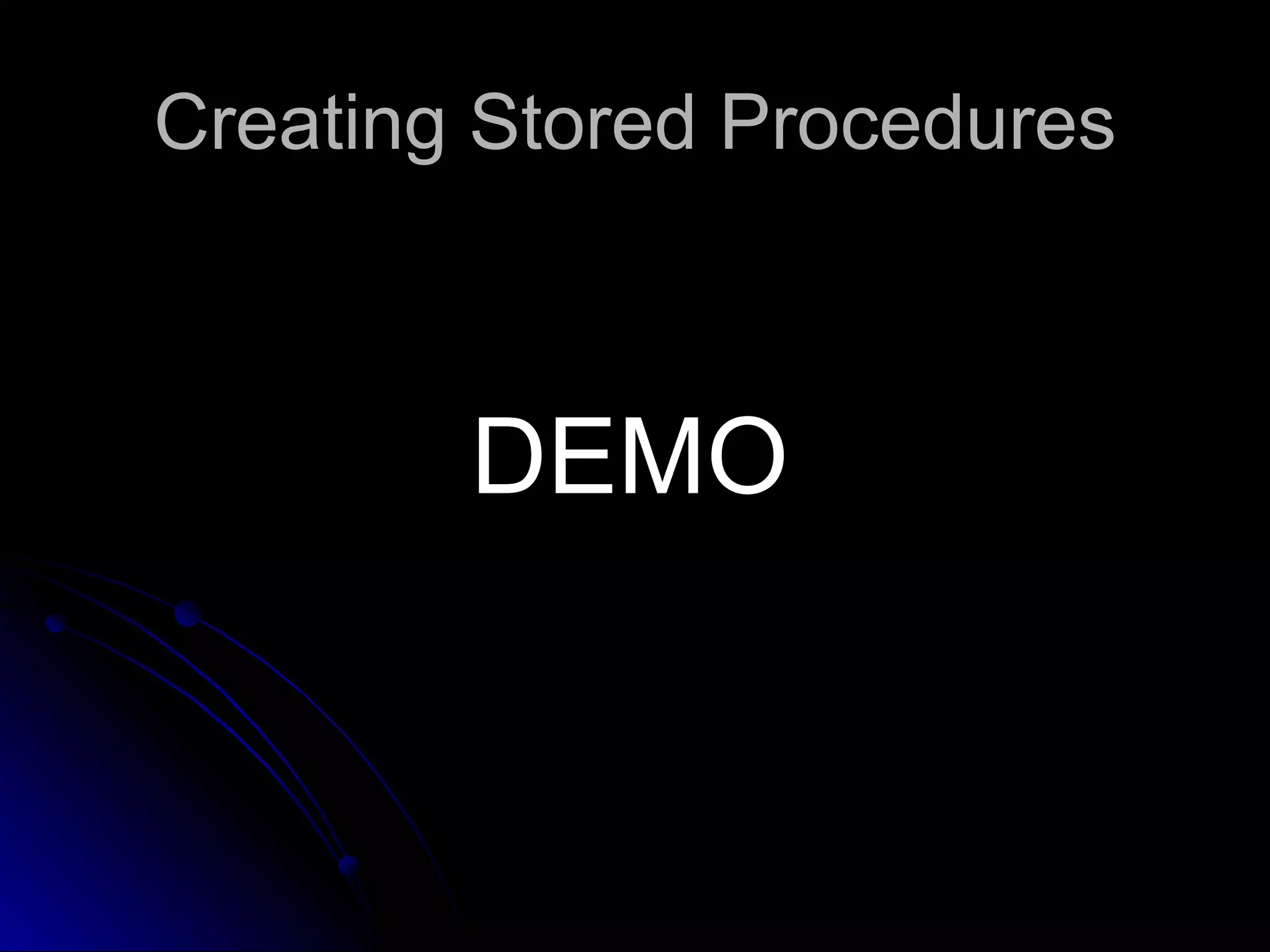
![Scalar Functions Static public method Scalar return type Microsoft.SqlServer.Server.SqlFunction attribute [SqlFunction] public static SqlString ScalarFunction() { return new SqlString("Hello"); }](https://image.slidesharecdn.com/sql-server-2005-clr-integration1119/75/SQL-Server-2005-CLR-Integration-10-2048.jpg)
![Table-Valued Functions Static public method IEnumerable return type Microsoft.SqlServer.Server.SqlFunction attribute – FillRowMethodName parameter [SqlFunction (FillRowMethodName="FillRow")] public static IEnumerable TableValuedFunction() { // Put your code here return new string[] {"Syracuse", "Rochester" ... }; } public static void FillRow(object o, out string name) { name = (string)o; }](https://image.slidesharecdn.com/sql-server-2005-clr-integration1119/75/SQL-Server-2005-CLR-Integration-11-2048.jpg)
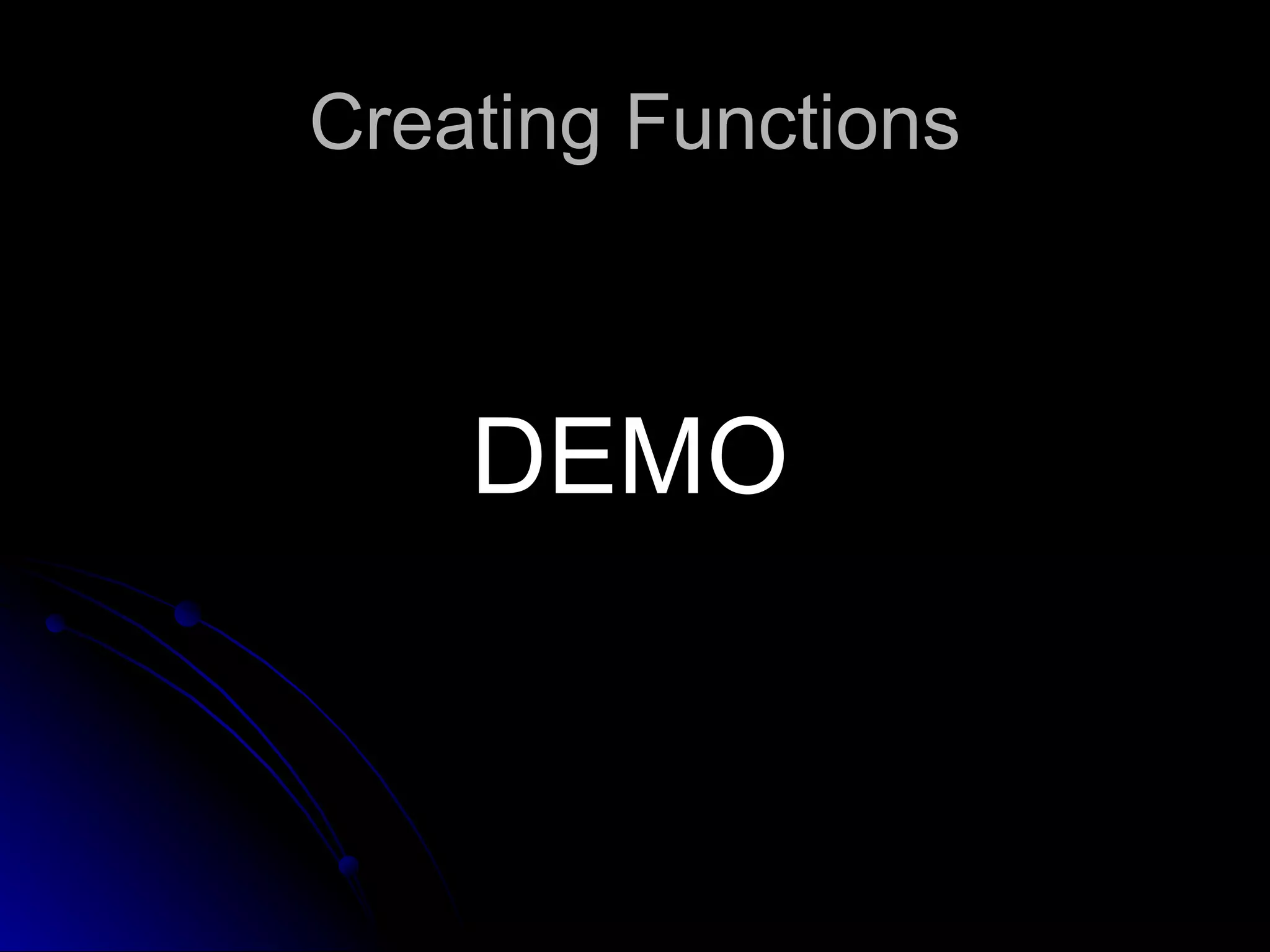
![Triggers Public static void method Microsoft.SqlServer.Server.SqlTrigger attribute TriggerContext object available through SqlContext object [SqlTrigger (Name="Emp_UPD", Target="emp", Event="FOR UPDATE")] public static void Trigger() { if (SqlContext.TriggerContext.IsUpdatedColumn(0)) { //... } }](https://image.slidesharecdn.com/sql-server-2005-clr-integration1119/75/SQL-Server-2005-CLR-Integration-13-2048.jpg)
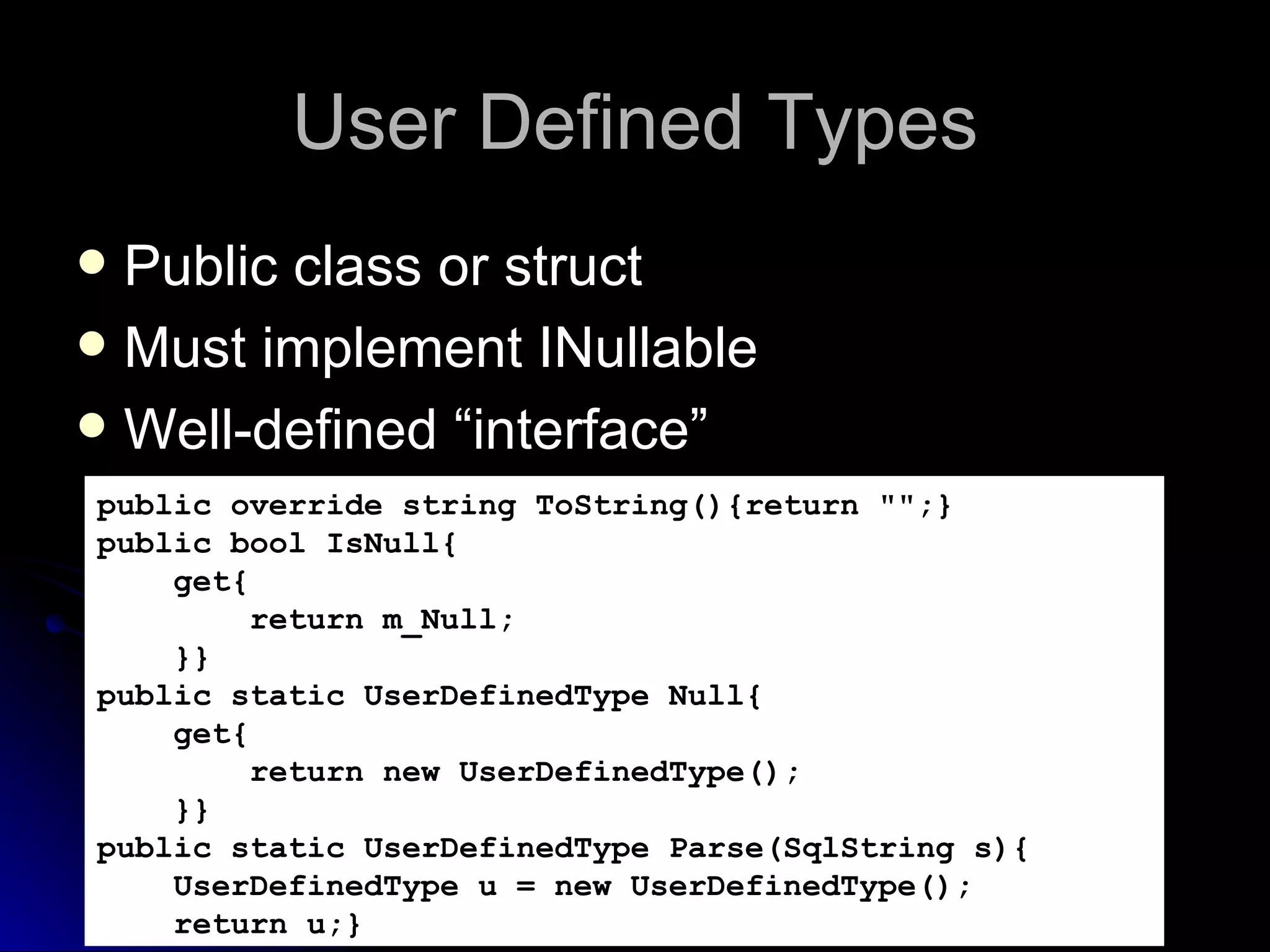
![User Defined Aggregates Public class or struct; well-defined “interface” System.Serializable attribute Microsoft.SqlServer.Server. SqlUserDefinedAggregate attribute Serialization options [S erializable] [SqlUserDefinedAggregate(Format.Native)] public struct Aggregate{ public void Init(){} public void Accumulate(SqlString Value){} public void Merge(Aggregate Group){} public SqlString Terminate(){ return new SqlString("");} }](https://image.slidesharecdn.com/sql-server-2005-clr-integration1119/75/SQL-Server-2005-CLR-Integration-15-2048.jpg)
